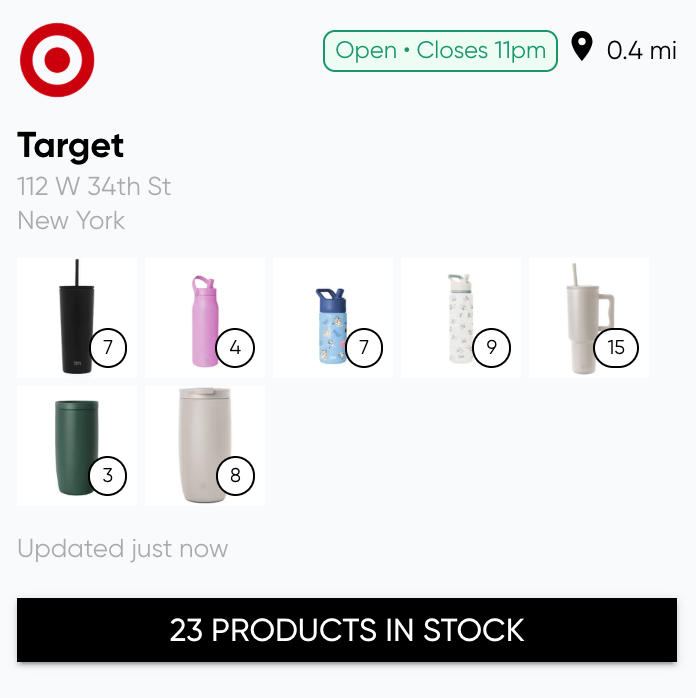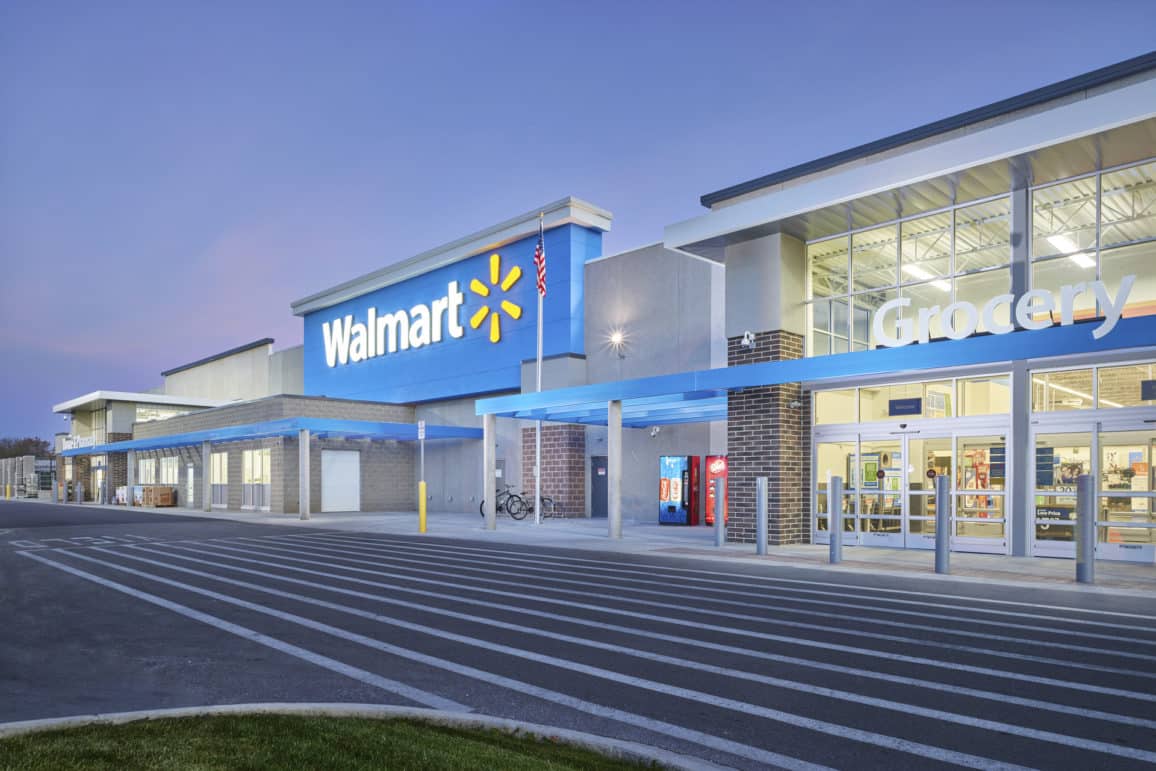If you run or market a brand selling through retail, giving consumers a store locator feature with live stock info isn’t just a “nice to have”, It has real, measurable business impact. Static store counts and syndicated retail reports are useful—but they lack at minimizing outcomes that lead to missed sales, poor brand perception and wasted marketing spend. Here’s how showing live product availability (i.e., “we have 7 in stock now at your nearest store”) changes shopper behavior, why it matters, and what the trade-offs are.
About:
At StoreLocators we’ve provided live retail data to omni-channel powerhouse brands like True Classic, Simple Modern and BlendJet, enabling highly converting marketing strategies.
"StoreLocators has been instrumental in offering top-tier service to our customers, enabling them to easily locate their nearest Kohl's store stocked with True Classic products in specific sizes and colors."
- Ben Yahalom, CEO, True Classic

The Cost of In-Stock Uncertainty
Let’s start with what happens when in-store availability is uncertain or wrong:
- Lost sales: If a product is advertised as “available here” but is out of stock, customers are led to dead ends and unable to purchase what they were looking for. A NielsenIQ study found that 91% of customers won’t wait for an item to restock and will either choose a competitor product or abandon the purchase.
- Brand perception suffers: Frequent stockouts lead customers to view a brand as unreliable. Amra & Elma report that 76% of shoppers say stock issues negatively impact how trustworthy or dependable a brand seems.
So there’s a clear cost to uncertainty: lost revenue, diminished loyalty, and wasted marketing spend. Only showing your customers locations with in-stock products within your locator can minimize these risks. This is where live retail data comes to play.

What Static Store Counts and Syndicated Data DO Well
While they can’t guarantee what’s on the shelf today, static store counts and syndicated retail data still bring value—they fill different needs.
Static Store Counts
- What it’s good for: Demonstrating distribution reach. Saying “we are available in X stores” is powerful for PR, investor decks, and retail buyer meetings.
- Why it matters: Helps build awareness by letting consumers know that stores carry your product.
Syndicated Data (SPINS, NielsenIQ, etc.)
- What it’s good for: Trend tracking and competitive benchmarking—understanding what’s growing and what’s shrinking.
- Why it matters: Provides insights into category velocity, pricing trends, and margins across channels.
The challenge is that both are retrospective sources of data, lagging in product availability recency. They don’t surface what the end consumer looks at (retailer storefronts) when trying to find products in store—this is the most up to date source of data available.
What Live Retail Data Adds: Concrete Outcomes
When you show live in-stock info within your store locator, you unlock outcomes that matter for both customers and your bottom line:
- Higher conversion at the point of discovery
When a shopper instantly sees a product listed as “in stock” (and can trust it), they’re much more likely to follow through. No guessing, no disappointment. This removes friction in the path to purchase. - Reduced support burden / “lost foot traffic” costs
If someone shows up to buy and the store doesn’t have the item, you not only lose the sale (likely to a competitor) but risk negative word of mouth or a bad review. Ensuring accuracy through live retail data reduces these incidents. - More effective marketing spend
If your locator only shows customers stores where your products are currently in stock, budget isn't wasted pushing traffic to stores without inventory. This improves return on ad spend. - Stronger retail relationships
Retailers like to see results: foot traffic, sell-through, fewer complaints. Accuracy in availability data enables highly converting retail marketing campaigns that your retail partners will appreciate, “After holiday shipping cutoffs we push customers in-store to buy gifts. Retailers appreciate it. (Bryan Porter, Co-Founder, Simple Modern)". - Improved customer trust & repeat purchase
One good experience (locate + purchase) builds positive expectations and customer experience. Conversely, repeated stockout experiences erode trust. Customers expect to view the most up to date source of data.
Framing The Difference: What Your Brand Should Consider
Here’s a mental model StoreLocators uses to help brands decide what role each kind of data plays:
- Store counts are foundational. They're about presence, raising awareness. But they’re “zero-dimensional”—they tell you where, not when.
- Syndicated data can give you dimensions of when and where. But for your customers looking to make in-store purchasing decisions, this data is retrospective and looking backwards at what existed rather than what exists now.
- Live retail data adds a different dimension: now. It satisfies immediate demand by giving consumers certainty where products are on shelf now, turning intent into purchase and building trust that drives repeat behavior.
Conclusion: What This Means for You
If your store locator is still just showing “available in store X / store count = 500,” you’re likely leaving money—and trust—on the table. The more you let shoppers know “this item is in stock now nearby,” the more you reduce friction, improve conversion, and build credibility.
Brands that are winning in retail now are the ones lowering uncertainty—not just with better aesthetics or ad spend, but with up-to-date, reliable availability data. Because in a world where consumers expect immediacy and accuracy, the cost of getting it wrong is high, but the upside of getting it right is even higher.




